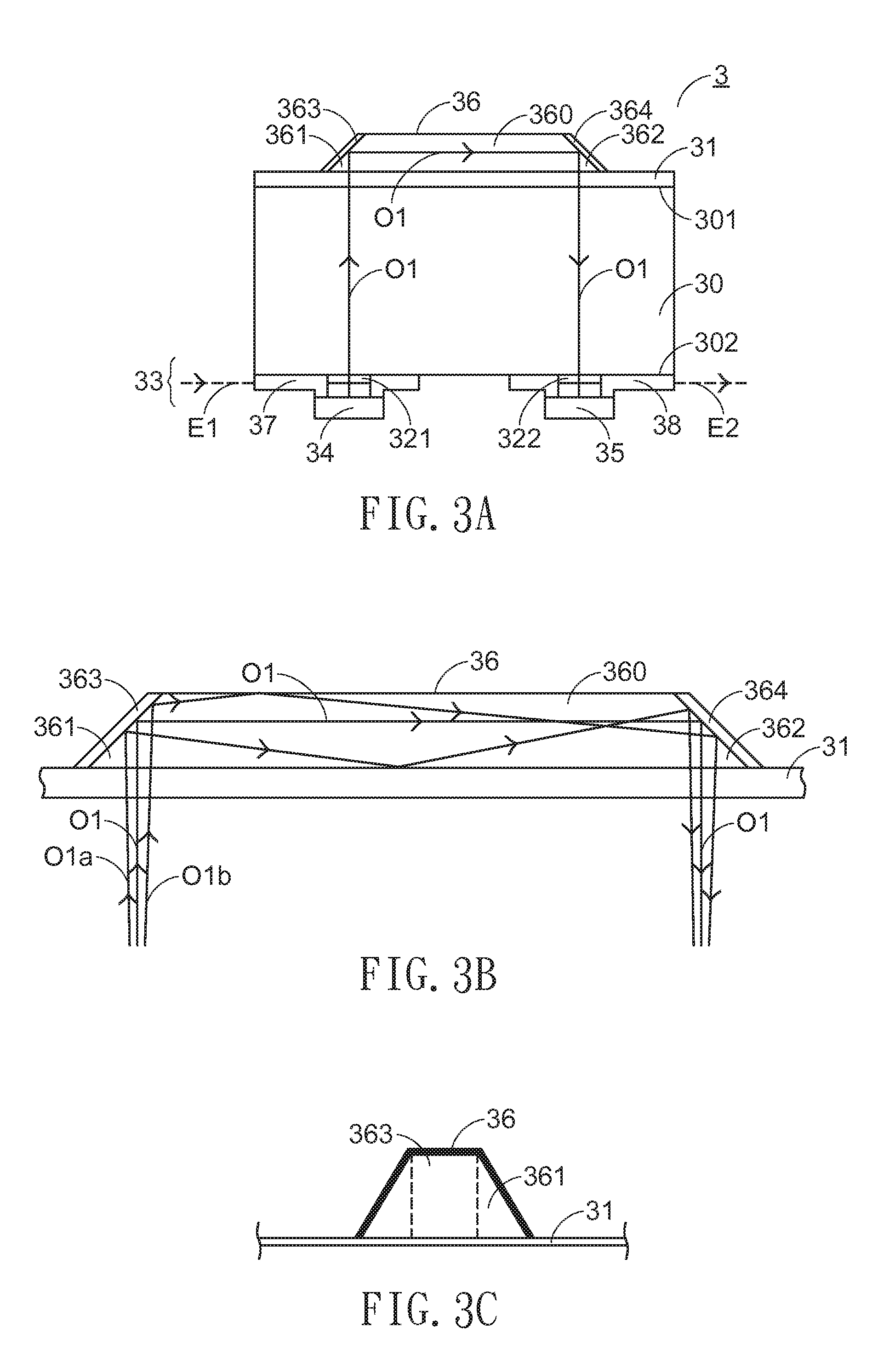Optical transmission module
a transmission module and optical transmission technology, applied in the direction of optics, optical waveguide light guide, instruments, etc., can solve the problems of inconvenient use of specific materials, inability to meet the requirements of conventional metallic transmission lines, and complicated arrangement of electronic component layers and photonic layers at the same side, so as to improve the signal transmission efficiency of optical transmission modules and simplify the manufacturing process
- Summary
- Abstract
- Description
- Claims
- Application Information
AI Technical Summary
Benefits of technology
Problems solved by technology
Method used
Image
Examples
Embodiment Construction
[0021]The present invention will now be described more specifically with reference to the following embodiments. It is to be noted that the following descriptions of preferred embodiments of this invention are presented herein for purpose of illustration and description only. It is not intended to be exhaustive or to be limited to the precise form disclosed.
[0022]FIG. 3A is a schematic cross-sectional view illustrating an optical transmission module according to a first embodiment of the present invention. As shown in FIG. 3A, the optical transmission module 3 includes a semiconductor substrate 30, a first film layer 31, an electronic component layer 33 and a waveguide structure 36. The semiconductor substrate 30 has two opposite surfaces: a first surface 301 (i.e. a top surface) and a second surface 302 (e.g. a bottom surface). The first film layer 31 and the electronic component layer 33 are formed on the first surface 301 and the second surface 302 of the semiconductor substrate ...
PUM
 Login to View More
Login to View More Abstract
Description
Claims
Application Information
 Login to View More
Login to View More - R&D
- Intellectual Property
- Life Sciences
- Materials
- Tech Scout
- Unparalleled Data Quality
- Higher Quality Content
- 60% Fewer Hallucinations
Browse by: Latest US Patents, China's latest patents, Technical Efficacy Thesaurus, Application Domain, Technology Topic, Popular Technical Reports.
© 2025 PatSnap. All rights reserved.Legal|Privacy policy|Modern Slavery Act Transparency Statement|Sitemap|About US| Contact US: help@patsnap.com



